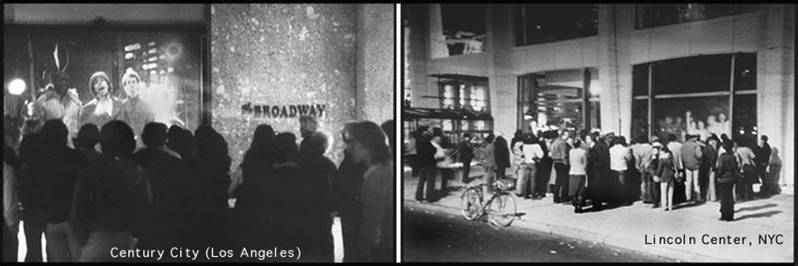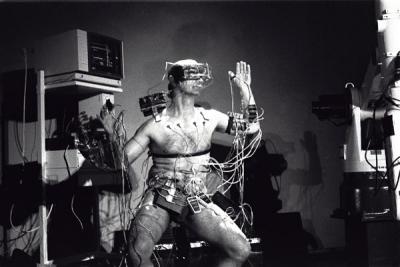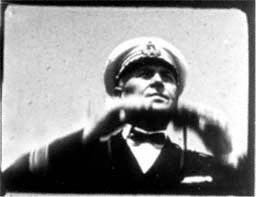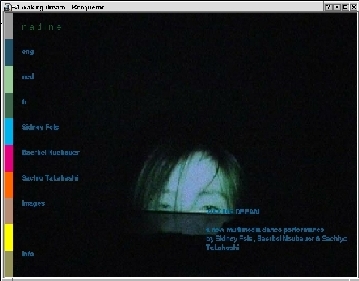| |
Each focus conducted case studies of digital dynamic, interactive or experiential records produced
in the various areas of endeavour that it was concerned with to gather an understanding of the activities creating the records, their purpose, their
phases and the component actions, their by-products and their structure, and their context, but also their technological environment and their use. The findings
of the case studies provided much of the data necessary to answer the research questions of all domains and cross-domains. For information
on the selection and conduct of case studies see the Call for Case Study Proposals, Compliance
with Requirements for the Protection of Human Research Subjects and Data, Consent to Participate in the research, Interviewee Permission Agreement, 23 case study questions that the researchers should be able to answer at the completion of their investigations, list of possible questions for interviewees,
questions to keep in mind for the domain and cross-domain research, and the Case Study Reporting
Framework.
FOCUS 1 - Artistic Activities
CS01 - Arbo Cyber, Théâtre (?)
This case study focuses on the work of Arbo Cyber, Théâtre (?), a company whose artistic output involves performing arts, visual arts and media
arts. Arbo has created over 20 performances, numerous laboratories and school workshops between 1985 and 2001. In an effort to preserve their work, members
of Arbo are now seeking to digitize their artistic works. The case study team was interested in following the processes of digitization and transformation of
the creative materials created by Arbo in the course of realizing its original productions.
- The CS01 public documents are available here.
|
CS02 - Performance Artist Stelarc
Stelarc is an artist who frequently collaborates with computer programmers, technicians and scientists. His art is exhibited or performed in diverse environments,
including galleries, aerial suspensions and the Internet. The case study team was interested in learning where record creation begins and ends with
Stelarc’s art. In addition, the fragility of the environments in which the works are created and performed raised questions relating to issues
of reliability and authenticity.
- The CS02 public documents are available here.
|
CS03 - Horizon Zero/Zero Horizon Online Magazine and Media Database
The Horizon Zero/Zero Horizon online magazine focuses on digital art in Canada. The magazine’s digital assets are stored as unique objects in a database
system. The database system will grow over the lifespan of the magazine and serve as a searchable content repository. The case study team investigated
the distinction between digital records and publications. The findings of this case study help answer the research questions relating to the nature
of the records and processes that create and maintain them, and questions relating to the concepts of reliability, accuracy and authenticity.
- The CS03 public documents are available here.
CS09 - Digital Moving images - Inputs, Processes and Outputs
This case study sought to build a model describing and explaining the processes involved in creating digital moving image products and the by-products resulting
from those processes. The case study team followed four different digitally-created productions through the stages of pre-production, production and
post-production. Among its many objectives, this study sought to identify the digital entities created at each stage of the process, model the structure
of each digital entity and show the relationships between the digital entities and their relationships to the overall production.
- The CS09 public documents are available here.
CS10 - The Danube Exodus: Interactive Multimedia
Piece
This case study examines the processes, products and by-products involved in creating an interactive multimedia piece that has taken two forms; a gallery
installation and a Web site. The gallery installation is no longer active but the Web site is still live. The issue of possible future manifestations are also examined. This case study offers the opportunity to examine issues of reliability and authenticity within a virtual and hybrid context.
- The CS10 public documents are available here.
|
|
CS13 - Obsessed Again...
Obsessed Again… is a work for bassoon and interactive electronics written in 1992 by Canadian composer, Keith Hamel. The work was designed to use commercial
hardware and software but the required equipment is quickly becoming obsolete. The commissioner of the work has expressed a wish to reconstitute the work.
The case study’s objectives included identifying both digital and non-digital documents associated with the work, articulating the requirements for musical authenticity
based upon the documents, building a performable, authentic realization of the work, and developing a method for the future storage, retrieval, migration and
access of the work.
- The CS13 public documents are available here.
|
CS15 - Waking Dream
Waking Dream is a performance piece for two people using multiple theatrical elements. The goals of this case study were to identify the digital and non-digital
components such as software, hardware designs and audio; articulate the requirements for performance authenticity for the piece; build a performable,
authentic realization of the piece; and develop methods for future storage, retrieval and migration of, and access to, the work.
- The CS15 public documents are available here.
|
CS22 - Electronic Café International: Aging Records from
Technology-based Artistic Activities
The Electronic Café Intentional (ECI) is a multimedia international network for showcasing creative, multi-cultural, multi-disciplinary, collaborative telecommunications.
This case study deals with a wide variety of media types that now pose the problems of aging and obsolescent formats. ECI’s activities took place from
the mid-1970s to the present, and incorporated experiences that were dynamic and interactive, which is the focus of InterPARES 2 research. This study highlights
the problems posed by interactive, experiential, and dynamic records many years after they were initially created.

- The CS22 public documents are available here.
FOCUS 2 - Scientific Activities
CS06 - CyberCartographic Atlas of Antarctica
The CyberCartographic Atlas of Antarctica is a research project borne out of a grant from the Social Sciences and Humanities Research Council (SSHRC). This
project explores the new theoretical construct of CyberCartography, which sees the map as a new organizing mechanism for digital information in
the information era. The dynamic, multidimensional, multisensory and multimedia Atlas will become an important scientific digital knowledge asset that
will, from its inception, include archiving as an integral component of the project. The objectives of this case study were to explore the process of record
creation, the function of the record within the activity in which it participates and to determine which of a record’s features allow its authenticity
to be determined to ensure that its authenticity is kept intact over time within the context of the CyberCartographic project.
- The CS06 public documents are available here.
CS08 - Mars Global Surveyor Data Records in the Planetary Data System
This case study attempts to validate the IDEF(0) model for the Preservation of Electronic Records that was developed in the InterPARES 1 Project. The case study
records were created by a NASA Spacecraft Mission Operation and a NASA Space Science Data (and Records) Archive.
- The CS08 public documents are available here.
CS14 - Archaeological Records in a Geographical Information System:
Research in the American Southwest
This case study focuses on records from geographic information systems (GIS) that were created by the Center for Desert Archaeology in Tucson, Arizona. Specifically, it examines
how these records were created, what their disposition is, what happens after disposition, and their corresponding authenticity, reliability and accuracy while
undergoing these processes. GIS records are interactive digital records that are increasingly being created in the archaeological context. Another focus
of the study is how the perception of records is related to the concept of memory to archaeologists, the related (human) landscapes and to the descendants of the areas that are
studied by archaeologists.
- The CS14 public documents are available here.
CS19 - Preservation and Authentication of Electronic Engineering
and Manufacturing Records
The electronic engineering and manufacturing records that are examined in this case study have been created in computer-assisted engineering, computer-assisted
design and industrial automation systems. The focus of this case study is on examining the ability of complex engineering records to stand for the solid objects
modeled in the records, and the ability of the manufacturing records to represent the processes required to produce such solid objects.
- The CS19 public documents are available here.
CS26 - MOST Satellite Mission: Preservation of Space Telescope
Data
This case study examines how MOST (Microvariability & Oscillations of Stars), a scientific research project in astronomy, manages its unique data that are
transmitted from a telescope in space. The study investigates how the data can be preserved, how technological restraints complicate the creation,
maintenance and preservation of the data, and how future researchers can be assured that the preserved data are reliable, authentic and accurate. This study also
explores the effect of the business process on the various phases of the life-cycle of the data and records, and examines how researchers interpret accuracy,
reliability and authenticity in the setting of scientific research.
- The CS26 public documents are available here.
FOCUS 3 - e-Government Activities
CS05 - Archives of Ontario Web Site Exhibits
This case study examines three online exhibits developed by the Archives of Ontario as a means to enhance access to its holdings. Specifically, this study investigates
the experiential and interactive records that emerge from the creation and posting of these exhibits, and the present
and potential uses of these records within the government sector.
- The CS05 public documents are available here.
CS12 - Antarctic Treaty Searchable Database
This case study focuses on applications of the Antarctic Treaty Searchable Database to the organization, cost-effective management and knowledge-discovery
of public-domain legal records that are created by governments. The Antarctic Treaty Searchable Database was part of a two-year National Science foundation
project through the National Science, Technology, Engineering, and Mathematics Education Digital Library (NSDL). The objectives of this case study included
determining the functional and conceptual challenges of modeling the creation and preservation of digital records, and determining the technical and administrative
challenges of repurposing public-domain records.
- The CS12 public documents are available here.
CS17 - New York State Department of Motor Vehicles On-line Services System
This case study examines the online services offered by New York State’s Department of Motor Vehicles (DMV). Users conduct legal and financial transactions
within the DMV’s Web site, which generates records in a networked and online environment. The DMV’s highly interactive online system features a complex set
of interwoven electronic activities. Of specific interest are issues relating to records creation and maintenance within the online system, issues relating
to ensuring accuracy, authenticity and reliability in the DMV’s recordkeeping system, and issues relating to technology.
- The CS17 public documents are available here.
CS18 - Computerization of Alsace-Moselle's Land Registry
This case study examines the creation of a computerized land registry in Alsace-Moselle, a French, regional administrative entity. Each entry requires the
signature of a judge, using a PKI combining biometric access and digital signatures. The focus of this case study is on digital signatures within a dynamic
information system designed to improve the efficiency of government-citizen relations in the context of the French civil law evidence system. The research
team also investigates the difference between authentication and authenticity, the design and implementation of a dynamic information system in the
e-government area, and how relevant regulatory frameworks can better harmonize with archival requirements.
- The CS18 public documents are available here.
CS20 - Revenue On-line Services (ROS)
This case study investigates the Revenue Commissioners of Ireland’s Revenue On-line Services system, which enables the generation, maintenance, access and
preservation of electronic-based tax and other records in a secure and appropriate environment. The research team also examines the metadata models and
standards used for information creation and exchange, issues of accuracy, authenticity and reliability as they relate to ensuring the integrity and confidentiality
of information supplied by users, and research disposition and appraisal decisions for electronic records in a working environment.
- The CS20 public documents are available here.
CS21 - Electronic Filing System (EFS) of the Supreme Court in Singapore
The Electronic Filing System is an online filing system of records of civil matters that is meant to facilitate the process of civil litigation through e-filing
and electronic information services, as well as to implement the use of electronic documents in electronic chambers or electronic courts. This case study subject
allowed the analysis of reliability and authenticity of e-government services in the courts within the context of Singapore’s juridical system. In addition,
the records creation process, appraisal and preservation of the records created within EFS, and the policies, procedures and standards taken to control the
creation, modification and preservation of records are examined.
- The CS21 public documents are available here.
CS24 - Preservation of the City of Vancouver Geographic Information System (VanMap)
VanMap is an extensive database of geographic data on the City of Vancouver maintained by the City’s Information Technology Department. The data are supplied
and updated on a regular basis by the Engineering, Planning, Social Planning, Permits and Licenses, Real Estate Services and other departments, and to a much
lesser extent by external agencies such as the provincial government and crown agencies. The fundamental purpose of VanMap is to meet the needs of internal
users in providing services to Vancouver’s citizens and businesses. The goals of this case study were to determine and understand the types of records that are generated
by the database, and to explore issues relating to security, recordkeeping and long-term preservation.
- The CS24 public documents are available here.
CS25 - Legacoop Bologna Web Site
Legacoop Bologna is an association of enterprises operating in the Bologna area to promote the development of cooperation, mutual aid and solidarity, stimulate
economic relationships among member cooperatives, and spread the principles and values of the cooperation ideal. Its Web site provides detailed and specialized
information on the world of the cooperative, and facts about the economic and social situation within the local territory. It also offers online interactive
services to its members. This case study explores the policy issues that arise when a Web site containing interactive private records is preserved
over the long term.
- The CS25 public documents are available here.
|





